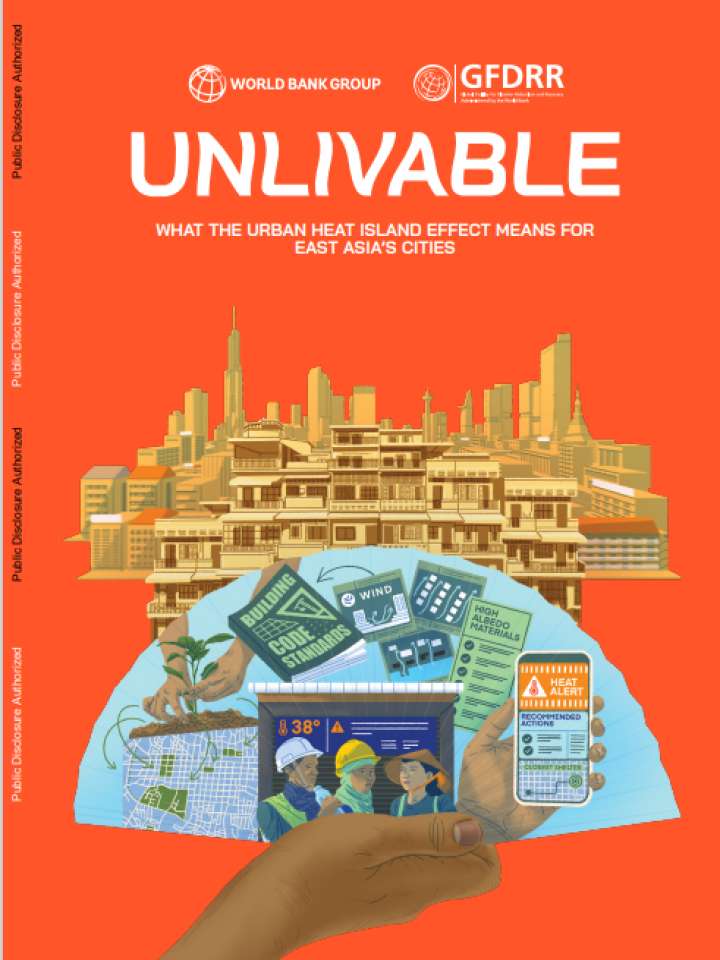Unlivable: What the urban heat island effect means for East Asia's cities
This publication covers how city leaders can significantly mitigate its impact on local temperatures while also further promoting greater adaptation to extreme urban temperatures. The urban heat island (UHI) effect, especially when considered together with climate change, represents a serious and growing threat to the competitiveness, livability, and inclusiveness of East Asia’s cities.
This publication finds that:
- To address the extreme urban heat challenge, East Asia’s city leaders can adopt a “Places, People, Institutions” policy framework. Heat stress is experienced in the physical spaces of a city. Making streets, plazas, parks, factories, workshops, marketplaces, and homes cooler will reduce heat stress, contributing to a vibrant economy and healthy population.
- Actions in six priority areas can help city leaders deliver on a “Places, People, Institutions” agenda for heat resilience. These strategic options for action are (a) promote urban greening through strategic planning; (b) cool city spaces through wind, shade, and urban design; (c) engage building owners in tackling indoor heat; (d) save lives through heat wave early warnings; (e) protect heat-exposed workers; and (f) mainstream heat risk reduction throughout city institutions and strategies.
Explore further

